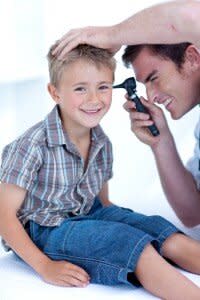First-Ever Guidelines About Ear Tubes in Kids

The first clinical guidelines ever created regarding the use of ear tubes—medically named tympanostomy tubes—were released yesterday by the American Academy of Otolargyngology-Head and Neck Surgery Foundation (AAO-HNSF).
These tiny tubes, about 1/20th of an inch, may be the best treatment for children suffering from ear aches, ear infections and middle ear fluid build-up. They work by allowing air to pass through the ear canal, which helps the fluid drain. The tubes are inserted into a child's ear canal under light general anesthesia and will fall out naturally over time from wax and debris build-up in the ears.
According to Dr. Richard Rosenfeld, chairman of otolaryngology at SUNY Downstate Medical Center in Brooklyn, New York, the insertion of ear tubes is the number-one ambulatory surgery in children and the number-one reason they undergo anesthesia. However, until yesterday, "no national society has ever published evidence-based guidelines on the best way to do this," he told CNN Health.
Written by a panel of pediatricians, ear, nose, and throat specialists, and an anesthesiologist, among others, these new guidelines address the implantation of ear tubes in children ages 6 months to 12 years. The guidelines suggest that children who have frequent ear infections that hold onto fluid (in other words, don't clear up quickly) are good candidates for ear tubes. Children experiencing fluid build-up in both ears for 3-months or more may also need tubes since the clogged hearing affects their balance, motor skills, and quality of life in group settings—such as in the classroom or social situations. Additionally, children at risk for fluid build-up related delays, such as those with autism, Down syndrome, or other developmental delays, should also be given ear tubes according to the guidelines.
Interestingly, the guidelines dictate that tubes should not be given to those children with frequent ear infections that do not have fluid build-up, which is a deviation from standard medical practice. Ask your doctor if your child has fluid build-up in his or her ears. If your child does not, ear tubes should be avoided according to these guidelines.
Image: Doctor looking at child's ear, via Shutterstock
